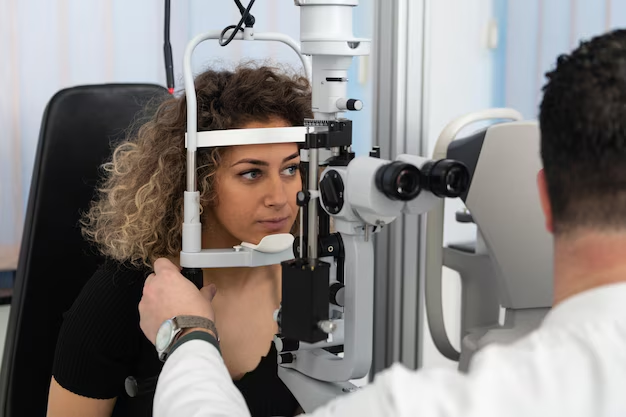What You Need to Know About Eye Cataracts: A Comprehensive Guide
Imagine a world where everything seems slightly blurred, colors become dull, and lights distort, forming halos around them. For many individuals, this is not a figment of imagination but a daily reality due to a condition known as a cataract. Understanding cataracts is crucial as they are among the leading causes of vision impairment globally. But what exactly are cataracts, and how do they affect the eye? Let’s dive deeper into this topic to uncover the mysteries of eye cataracts.
Discovering the Basics: What Are Eye Cataracts?
Cataracts are clouded areas that form in the lens of the eye, which is normally clear. This can result in vision that is foggy and less sharp, similar to looking through a frosted or misted window. Cataracts typically develop slowly and can affect one or both eyes, though they don’t spread from one eye to the other.
Causes and Risk Factors
Eye cataracts can be attributed to various causes, including:
Aging: As the most common cause, lens proteins can degrade and clump together with age, forming cloudy areas known as cataracts.
Trauma: Injuries to the eye may result in cataract formation.
Genetic Disorders: Certain inherited genetic disorders can increase cataract risk.
Medical Conditions: Diabetes and other health issues, such as metabolic disorders, can make cataracts more likely.
Environmental Factors: Prolonged exposure to ultraviolet (UV) light as well as certain medications, like corticosteroids, can contribute to cataract development.
Symptoms
Recognizing cataract symptoms early can be the first step towards managing the condition. Common symptoms include:
Blurred or Cloudy Vision: Vision may become blurry, cloudy, or dim.
Sensitivity to Light: Glare and halos from light sources become prominent.
Difficulty Seeing at Night: Night vision becomes challenging.
Color Fading: Colors may appear less vibrant or yellowed.
Frequent Prescription Changes: Noticeable and regular changes in eyeglass or contact lens prescriptions.
How Cataracts Impact Vision and Daily Life
Effects on Everyday Activities
From driving to reading, the presence of cataracts can profoundly impact day-to-day tasks. Those affected may find it difficult to:
Navigate in Low Light Conditions: Cataracts can make driving at night or navigating poorly lit areas more daunting.
Read Fine Print or Screens: Small text on a page or digital screen may become challenging to discern.
Identify Colors Accurately: Seeing true shades and colors can be difficult, affecting how individuals choose clothing or notice lights.
Emotional and Psychological Effects
The inconvenience and challenges that cataracts bring can lead to emotional distress, such as frustration, anxiety, and a feeling of losing independence. Addressing these emotional aspects is just as important as the physical symptoms.
Cataract Diagnosis and Treatment Options
Diagnosis: What to Expect
Diagnosing cataracts usually involves a thorough eye examination conducted by an eye care professional. This may include:
Visual Acuity Tests: Chart exams to measure clarity at various distances.
Slit-Lamp Examination: Uses strong light to look at structures at the front of the eye.
Retina Examination: Pupil dilation to enable closer inspection of the retina.
Treatment Paths
If cataracts begin affecting the quality of life, various management strategies can be explored:
Non-Surgical Options: Early-stage cataracts might be managed with stronger lighting, magnifying lenses, or updated eyewear prescriptions.
Surgical Intervention: For advanced cases, cataract surgery becomes necessary. This is a common and generally safe procedure where the cloudy lens is replaced with an artificial one.
Types of Cataract Surgery
Phacoemulsification: The most common method, using ultrasound waves to break up the lens before removal.
Extracapsular Extraction: Involves removing the cloudy part of the lens in one piece after making a larger incision.
Both methods typically result in the implantation of an intraocular lens to restore vision clarity.
Preventive Measures and Lifestyle Adjustments
While cataracts cannot always be prevented, certain lifestyle adaptations can slow progression:
Wear Sunglasses: Protection from UV rays with sunglasses or hats.
Manage Health Conditions: Proper control of diabetes and other health issues.
Regular Eye Exams: Routine check-ups help in early detection and management.
Healthy Diet: Foods rich in antioxidants, such as fruits and vegetables, may support eye health.
At a Glance: Quick Tips for Managing Cataracts
Here are some practical tips to consider if you or someone you know is managing cataracts:
- 🕶️ Protect Your Eyes: Use UV-blocking sunglasses and hats.
- 🗓️ Schedule Regular Exams: Early detection is key.
- 🍏 Eat for Your Eyes: Incorporate fruits and vegetables in your diet.
- 🔍 Optimize Your Environment: Enhance lighting and use visual aids like magnifiers.
Looking Ahead: What Are the Next Steps?
Understanding eye cataracts is the first step towards proactive vision health management. If you suspect cataracts are affecting your vision, consider the following actions:
Consult with an Optometrist: Professional consultation can confirm cataract presence and severity.
Discuss Treatment Options: Explore surgical and non-surgical management based on personal needs and lifestyle.
Stay Informed and Connected: Education about eye health fosters informed decisions and effective care strategies.
By taking control of eye health and remaining vigilant about changes in vision, individuals can continue to engage fully with the world around them, maintaining quality of life and independence for years to come. The journey with cataracts might be a challenge, but it's one that can be managed with the right knowledge and support.
